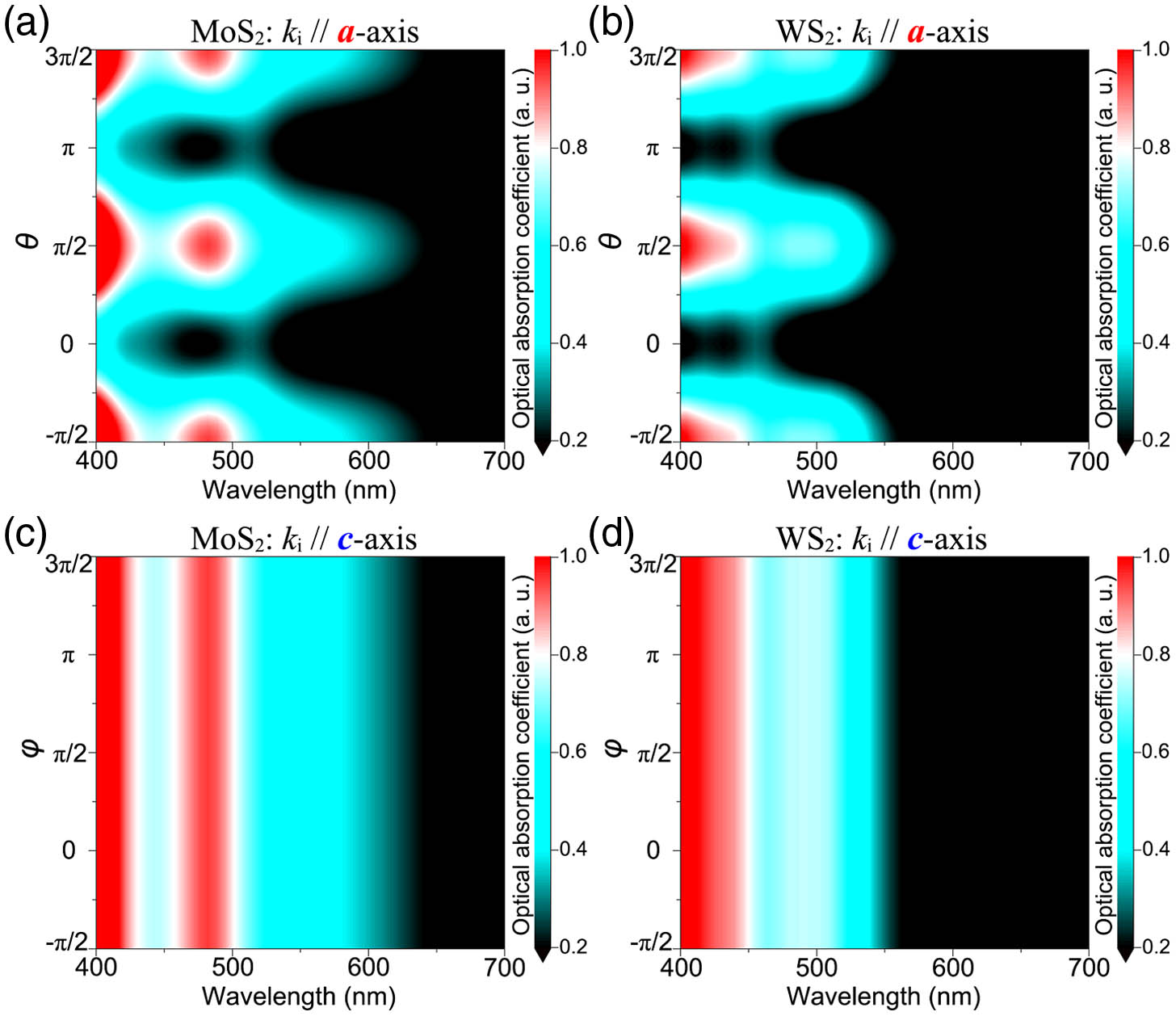Wei Zheng, Yanming Zhu, Fadi Li, Feng Huang, "Raman spectroscopy regulation in van der Waals crystals," Photonics Res. 6, 991 (2018)
Search by keywords or author
- Photonics Research
- Vol. 6, Issue 11, 991 (2018)
![Typical Raman spectra of MoS2 and WS2 scattering from in-plane (ei⊥c axis). (a) Typical Raman-scattering spectrum of MoS2 excited by a 633 nm laser, and a large number of LA(M)-related RS modes are excited. All recoded modes in MoS2 Raman spectroscopy are identified as 179 [A1g(M)+LA(M)], 383 [E2g1(Γ)], 409 [A1g(Γ)], 421 [B2g2+E1u2(Γ−A)], 454 [2LA(M)], 465 [A2u(Γ)], 529 [E1g(M)+LA(M)], 572 [2E1g(Γ)], 600 [E2g1(M)+LA(M)], 644 [A1g(M)+LA(M)], 767 (unknown), 785 (unknown), and 824 (unknown) cm−1 [14,16]. (b) Typical Raman-scattering spectrum of WS2 excited by a 532 nm laser, and the recoded modes are identified as LA(M) at 175 cm−1, E2g1(M)−LA(M) at 195 cm−1, A1g(M)−LA(M) at 233 cm−1, 2LA(M)−2E2g2(M) at 298 cm−1, E1g(M) at 323 cm−1, 2LA(M) at 351 cm−1, A1g(Γ) at 421 cm−1, E2g1(M)+LA(M) at 523 cm−1, A1g(M)+LA(M) at 585 cm−1, and 4LA(M) at 701 cm−1 [9].](/richHtml/prj/2018/6/11/11000991/img_001.jpg)
Fig. 1. Typical Raman spectra of MoS 2 WS 2 e i ⊥ c MoS 2 M )-related RS modes are excited. All recoded modes in MoS 2 [ A 1 g ( M ) + LA ( M ) ] [ E 2 g 1 ( Γ ) ] [ A 1 g ( Γ ) ] [ B 2 g 2 + E 1 u 2 ( Γ − A ) ] M )], 465 [ A 2 u ( Γ ) ] [ E 1 g ( M ) + LA ( M ) ] [ 2 E 1 g ( Γ ) ] [ E 2 g 1 ( M ) + LA ( M ) ] [ A 1 g ( M ) + LA ( M ) ] cm − 1 WS 2 M ) at 175 cm − 1 E 2 g 1 ( M ) − LA ( M ) 195 cm − 1 A 1 g ( M ) − LA ( M ) 233 cm − 1 2 LA ( M ) − 2 E 2 g 2 ( M ) 298 cm − 1 E 1 g ( M ) 323 cm − 1 M ) at 351 cm − 1 A 1 g ( Γ ) 421 cm − 1 , E 2 g 1 ( M ) + LA ( M ) 523 cm − 1 A 1 g ( M ) + LA ( M ) 585 cm − 1 M ) at 701 cm − 1

Fig. 2. Normalized optical absorption coefficients of the cross section (k i ∥ a MoS 2 WS 2 θ e i c k i ∥ c MoS 2 WS 2 φ e i c
Fig. 3. Improved Raman spectra of (a) MoS 2 WS 2 e i ∥ c 1 , the RS modes here are fully suppressed and the high SNR of the OP mode is highlighted.
Fig. 4. The cross-sectional angle-dependent polarized (CAP) Raman spectra of (a) MoS 2 WS 2 θ e i c MoS 2 WS 2 φ e i a
Fig. 5. Raman intensities of OP and RS modes extracted from Figs. 4(a) and 4(b) via Lorentzian fitting. (a) and (b) display angle-dependent intensities of A 1 g MoS 2 WS 2 MoS 2 WS 2 1 ). (c) and (d) show the angle-dependent intensities of resonant scattering modes in layered MoS 2 WS 2 θ θ = ( n + 1 / 2 ) π θ = n π

Set citation alerts for the article
Please enter your email address



